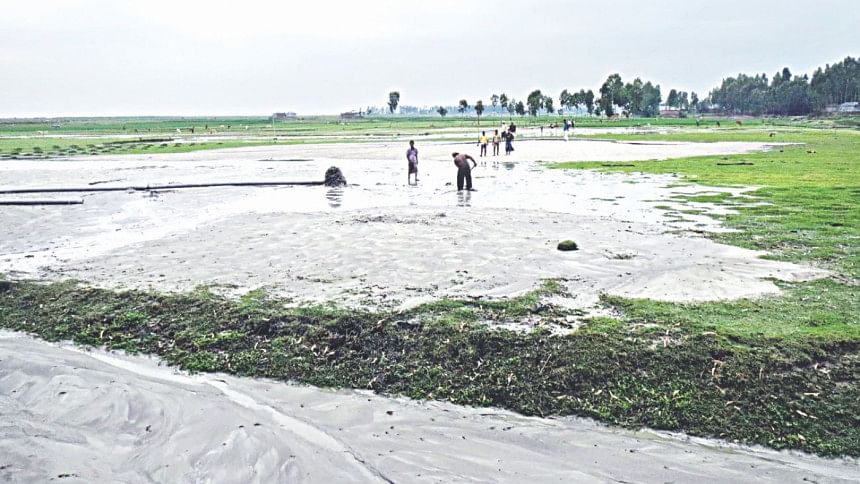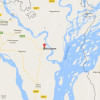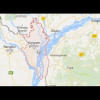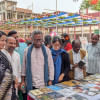Hope for the helpless

Khalilur Rahman, 36, from Gaburjan village in Hatia union of Kurigram's Ulipur upazila used to have a home on nine decimals of his own land. Like so many others in Hatia however, three years ago Khalilur's seven-member family lost their property thanks to the disastrous ongoing erosion of the Brahmaputra River. These days the family lives in a ramshackle house perched on the roadside; but a new 'guchhogram' cluster village project offers hope. Work is underway to rehabilitate up to fifty homeless families.
Khalilur is now a day labourer, often travelling to other districts for months on end in pursuit of agricultural work. He believes the guchhogram development may encourage more opportunities locally. He hopes his family can live there. “If we can get a house allocation my family will have permanent shelter again,” he says, “We will have a place to truly call home.”
Homelessness, especially from climate and geography-related causes, is not a new problem in Bangladesh. Neither is the guchhogram concept. Moved by the need to rehabilitate the millions made homeless by the 1970 Bhola cyclone, the nation's founder Sheikh Mujibur Rahman urged the land ministry to use vacant government 'khas' land to create new 'cluster villages' shortly after liberation. On 20 February 1972 he inaugurated the first guchhogram in Ramgoti of modern-day Lakshmipur district, in the belief that with a little assistance struggling families prosper.
Since then guchhogram-style housing initiatives under various names have been completed nationwide. The Guchhogram Phase 2 initiative, launched in 2015, aims to provide homes for 50,000 families in 2,550 settlements nationwide by June 2020. The Hatia development is one.
“Poverty is an enemy of Bangladesh,” says SM Abu Horayra, the regional project director for guchhogram implementation across Rajshahi and Rangpur divisions. “Climate-related factors like river erosion really devastate. They create ultra-poor citizens and destitute families. The government is working at addressing such catastrophe. The guchhogram initiative provides climate victims with a basic footing from which, with hard work, they can ultimately thrive.”

A contemporary guchhogram includes more than home construction. Recipients are provided with basic education in areas such as healthcare and work skills, as well as income-generation training. “After training, many resettled families pursue fish, pigeon or poultry farming, or cattle rearing,” says Horayra. “Many activities can be successful in the household yard without the need for greater landholdings.” Favourable credit facilities are also available.
He says it's a formula that works. “After three to five years the lifestyles of guchhogram residents are very much improved. In Dinajpur there is one guchhogram where most villagers use solar panels; in Natore is another where most houses are now brick, developed by the residents themselves. But the most inspiring change is in their outlook. They have much greater aware of issues like nutrition, family planning and the importance of education for their children. They feel such relief at having a permanent shelter, that feeling of ownership.”
Nationwide however, the guchhogram initiative faces a significant challenge: the amount of suitable khas land is decreasing. The government might consider constructing multi-storeyed housing to accommodate more families on less land, Horayra suggests; and he believes future projects could be improved in other ways.
“Most guchhogram sites include a multipurpose hall,” he says. “It could be beneficial if these halls become learning centres with books, newspapers and computer facilities. It'd be nice if each project included electricity grid connectivity from the outset, and the current basic kitchen and latrine facilities could be further developed. Associated skills training could be strengthened too, with available credit for income-generating projects raised to Tk 50,000 per family.” He says that although efforts are sincere, the government target to accommodate 50,000 families by mid 2020 is ambitious.
Meanwhile in Hatia's Gaburjan village there's a lot of activity. Concrete defences against erosion are being built along the Brahmaputra's bank. With dredging work completed, house construction at the guchhogram site is underway.
“We have allocated 2.43 acres to this guchhogram,” says Ulipur's upazila nirbahi officer Shafiqul Islam. “We are fortunate to have more khas land. I hope we can lease some of it to the guchhogram residents for cattle grazing. I also want to ensure fish-farming training.”
Yet the welcome initiative won't alleviate all local housing need. “We have around 1,000 homeless people,” says the union council chairman Abu Hossain. “We hope the national government will commit to more projects here.”
“There are many homeless families in Hatia,” Horayra agrees. “We need to help all of them. I hope we can, as soon as possible.”

 For all latest news, follow The Daily Star's Google News channel.
For all latest news, follow The Daily Star's Google News channel. 








Comments